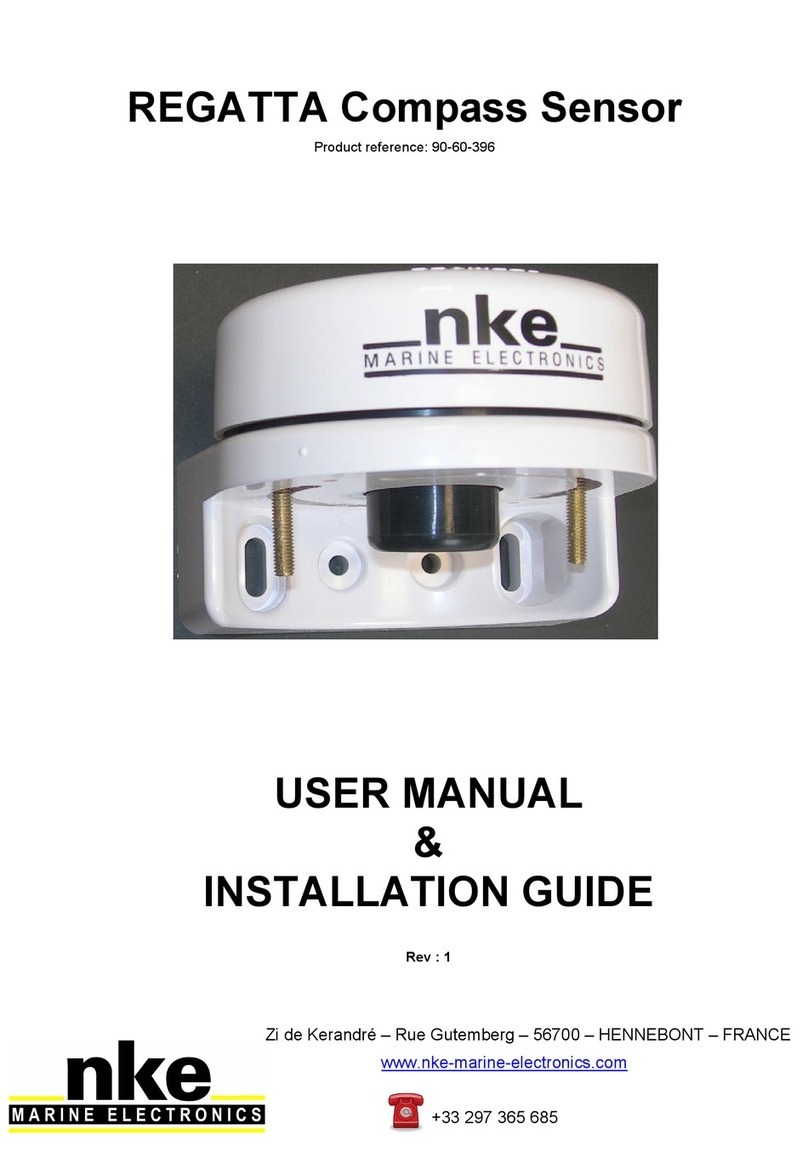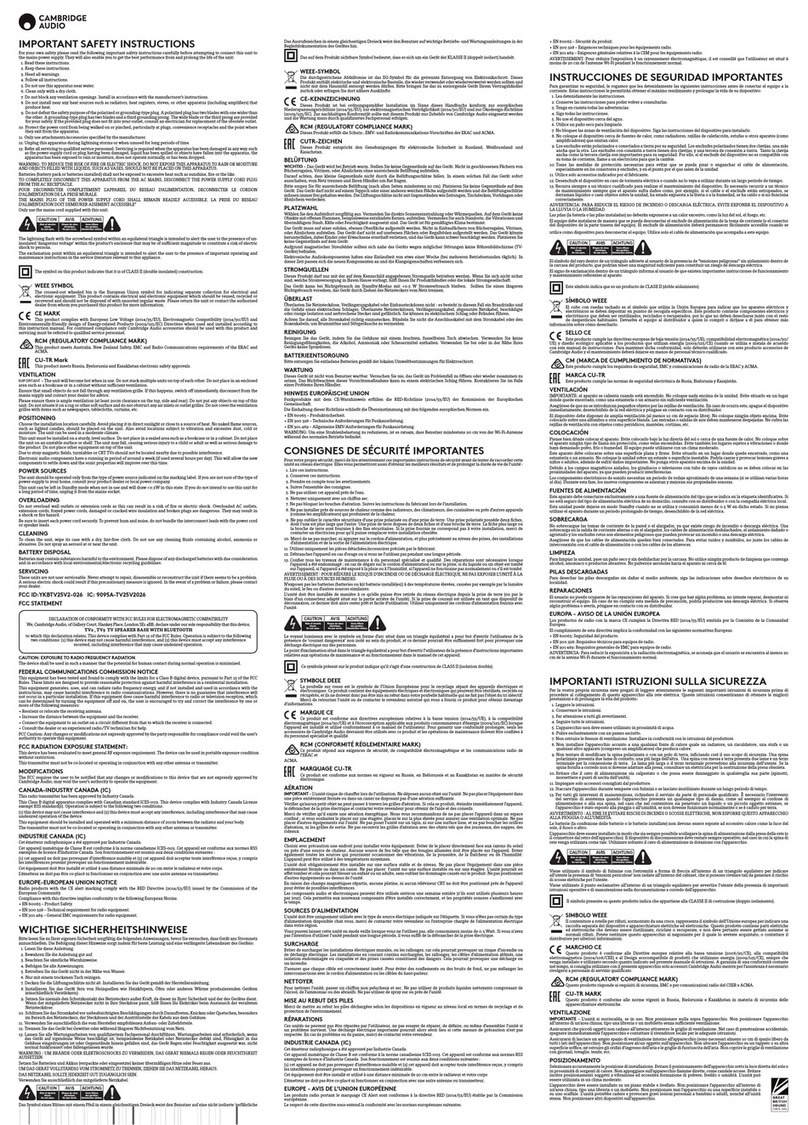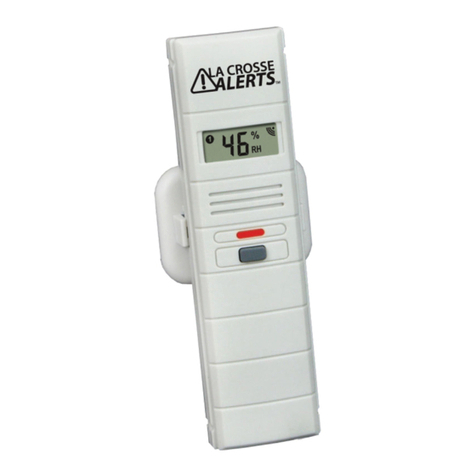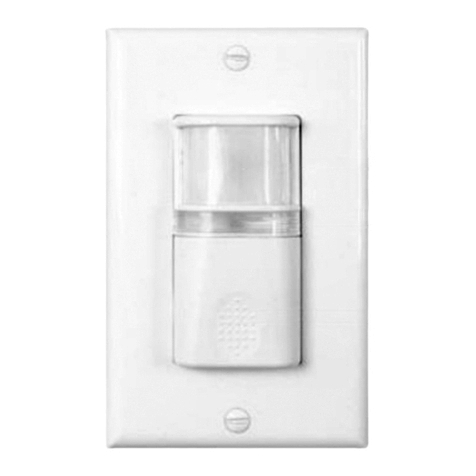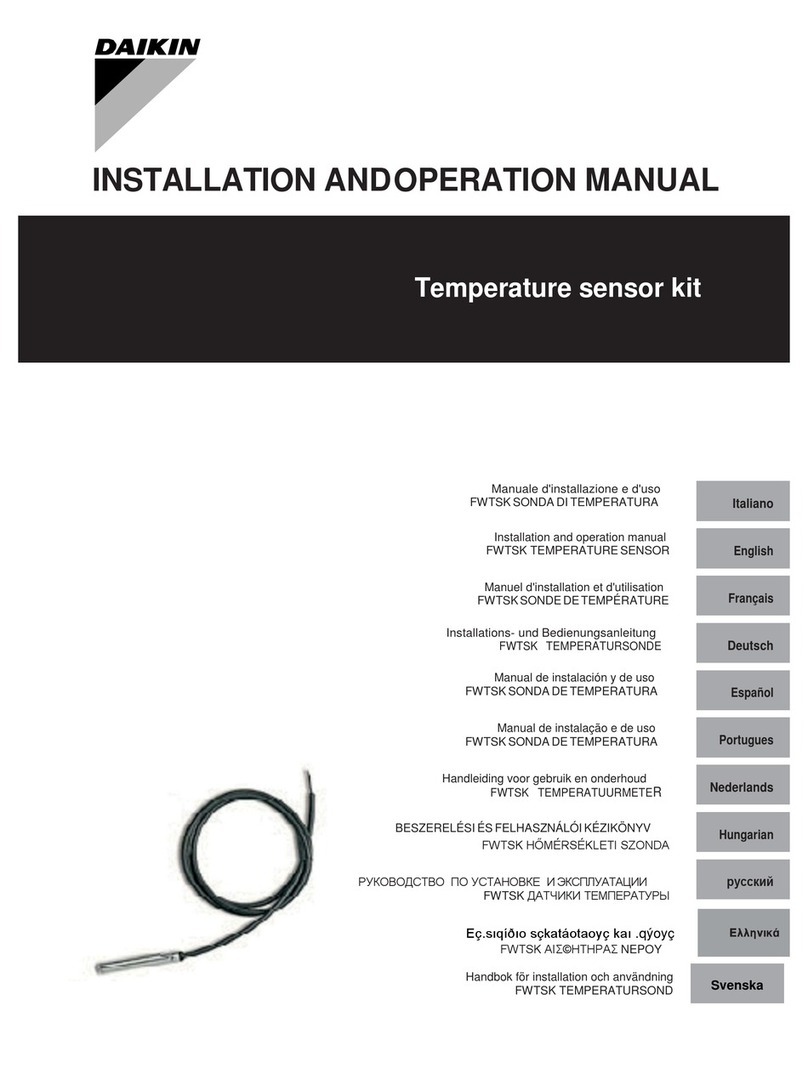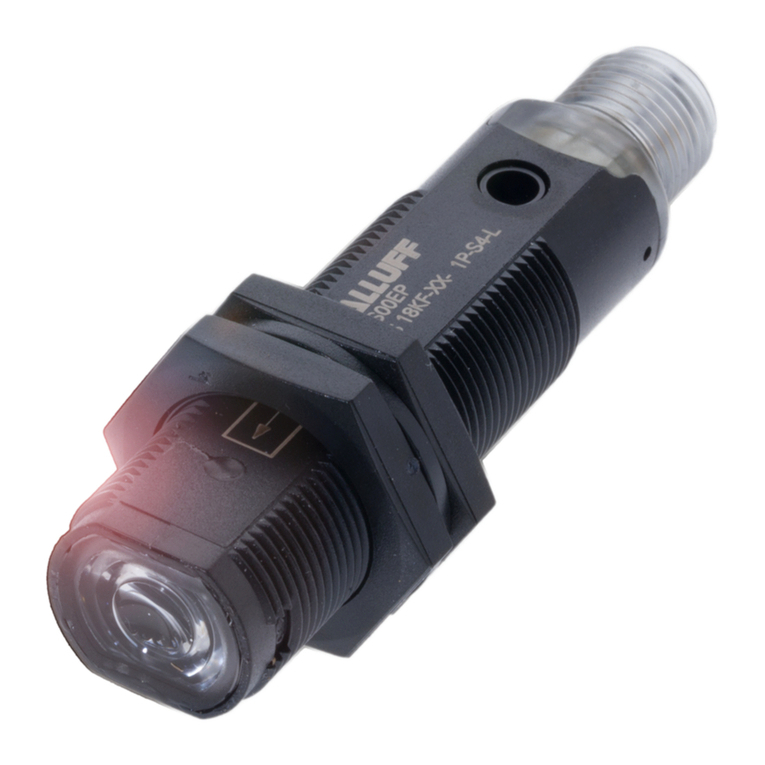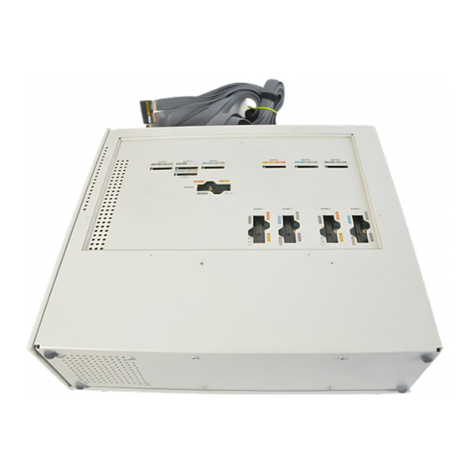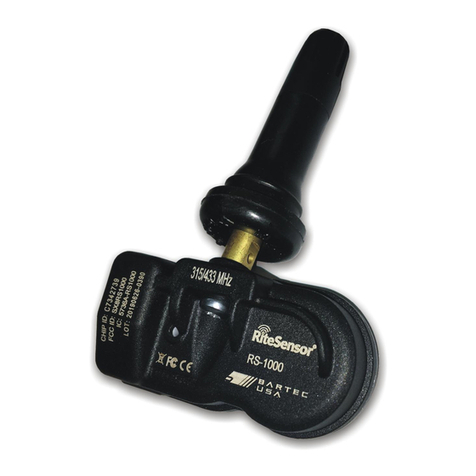NKE ULTRASONIC SPEEDO Instruction Manual

nke
-
Sailing competition
Z.I. Kerandré – Rue Gutenberg – 56700 HENNEBONT- FRANCE
http://www.nke.fr – N°indigo 0 892 680 656 : 0,34€/min.
ULTRASONIC SPEEDO sensor
Product reference : 90-60-479
REV 1
USER GUIDE
and
INSTALLATION GUIDE

-
2 -
Ultrasonic Speedo sensor - 33-60-043-000
TABLE OF CONTENTS
1 USE.......................................................................................................................................3
1.1 P
RESENTATION
.....................................................................................................................3
1.2 L
IST OF CHANNELS DISPLAYED
...............................................................................................4
1.3 A
LARMS SETTING
..................................................................................................................4
1.4 F
ILTERING OF THE CHANNELS
.................................................................................................5
1.5 C
HOICE OF THE UNIT
.............................................................................................................5
1.6 Z
ERO SETTING OF THE DAILY LOG AND TOTAL LOG
....................................................................5
1.7 T
ECHNICAL SPECIFICATIONS
..................................................................................................5
1.8 D
IAGNOSTIC OF
1
ST
LEVEL TROUBLESHOOTING
. .......................................................................6
2 USE OF THE ULTRASONIC SPEEDO ON NMEA OR PADDLEWHEEL OUTPUT............7
2.1 C
HARACTERISTICS OF THE
NMEA
OUTPUT
.............................................................................7
2.2 C
HARACTERISTICS OF THE
P
ADDLEWHEEL OUTPUT
..................................................................7
2.3 C
ONNECTION OF THE
NMEA
OR
P
ADDLEWHEEL OUTPUTS
.......................................................8
2.4 T
EMPERATURE
.....................................................................................................................8
3 SENSOR CALIBRATION......................................................................................................9
3.1 P
RINCIPLE OF CALIBRATION
: .................................................................................................9
3.2 S
ETTING PROCEDURE
OF THE CALIBRATION COEFFICIENT
:.......................................................9
4 INSTALLATION ..................................................................................................................10
4.1 P
ACKING LIST
.....................................................................................................................10
4.2 L
IST OF ACCESSORIES
.........................................................................................................10
4.3 S
PECIFIC TOOLS REQUIRED FOR THE INSTALLATION
...............................................................10
4.4 C
HOICE OF THE LOCATION
...................................................................................................10
4.5 I
NSTALLATION OF THE THROUGH
-
HULL
..................................................................................12
4.6 I
NSTALLATION OF THE
ULTRASONIC
SPEEDO
SENSOR
.....................................................13
4.7 I
NSTALLATION OF THE SAFETY WIRE
......................................................................................13
4.8 A
DAPTER FOR THE OLD NKE
THROUGH
-
HULL
:
31-36-002 ......................................................13
4.9 E
LECTRICAL CONNECTION TO THE
T
OPLINE
L
OCH
S
OUNDER
I
NTERFACE
..................................14
5 MAINTENANCE..................................................................................................................14
5.1 R
ECOMMENDATIONS
...........................................................................................................14
5.2 A
T PORT
,
HOW TO REMOVE A SENSOR FROM THE THROUGH
-
HULL
?.........................................14

-
3 -
Ultrasonic Speedo sensor - 33-60-043-000
1
USE
1.1
Presentation
The ULTRASONIC SPEEDO sensor is a measuring instrument that provides speed and
distance covered by the ship, as well as water temperature. Its ultrasound technology allows it
to achieve a level of accuracy and reliability superior to standard paddlewheel speedometers. In
the absence of any moving mechanical parts, no maintenance is required once it is put in
operation.
Two types of installation are possible :
−The ULTRASONIC SPEEDO is connected to the TOPLINE bus of your installation, via the
loch sounder interface.
−As an autonomous sensor, with a 12V power supply, the ULTRASONIC SPEEDO provides
the information on speed, via an NMEA0183 output or a Paddlewheel output.
The ULTRASONIC SPEEDO is installed on the hull of the boat, using a through-hull.
Architecture of the installation
TOPLINE bus cable
20-61-001
GND braid
DATA black
12VDC white
Figure 1
Ultrasonic
speedo Depth
sensor
Terminal box
90-60-417
nke
TL 25
16.85
SPEED SURF
APP WIND ANG
105-
KNOTS
DEGRES
10.50
DEPTH
METERS

-
4 -
Ultrasonic Speedo sensor - 33-60-043-000
IMPORTANT :
-Read this guide entirely before starting the installation.
-Some products, for cleaning, painting or other, contain powerful solvents, which can
severely damage the plastics and O-rings of the sensors.
-Plastic through-hulls are recommended for installation on fibre, aluminium or metal hulls.
For an installation on wood hull, use a bronze through-hull.
-For channel setting, please refer to your TOPLINE display user guide.
1.2 List of channels displayed
The ULTRASONIC SPEEDO sensor, connected to the nke TOPLINE bus, automatically
creates the channels below. They are accessible using the displays of the TOPLINE range..
Channel Display Unit
Boat speed
Boat spd 0.00
Kt
km/hr or knot
Daily log
Trip log 0.00
NM
Nautical mile
Total log
Total log 0.00
NM
Nautical mile
Bus voltage
Bus volt
12
.5
V
Volt
Water temperature
Water temp 15.4° °C or °F
1.3 Alarms setting
The setting of an alarm enables you to monitor the value of a channel. When the preset
threshold is exceeded, a warning message is displayed and an audible alarm is activated. For
example, you can set an upper threshold and a lower threshold on the boat speed channel.
The upper alarm is activated when the display is higher than the programmed threshold.
The lower alarm is activated when the display is lower than the programmed threshold.
To cancel the alarm of a channel, enter the value 0in the upper alarm and the lower alarm.
Thus, the setting of an alarm on the speed, bus voltage or water temperature channels will
allow you to supervise your installation effectively, as well as the good operation of your ship.
To activate the alarms, please refer to the user guide of your display.
CAUTION : The water temperature channel has a distinctive feature. To cancel the alarm of
this channel, enter the value 0, when the unit is the degree Fahrenheit, or -17.7, when the unit
is the degree Celsius.

-
5 -
Ultrasonic Speedo sensor - 33-60-043-000
1.4 Filtering of the channels (damping)
The level of filtering of a channel determines the frequency of update of the data displayed.
For example, in rough sea when the ship moves significantly, it is useful to increase the filtering
of the speed channel to stabilise the value displayed. Conversely, in calm sea, low filtering will
be preferable to obtain a fast response of the display.
Filtering is adjustable between 1and 32, and the default value is 8. The lower this value, the
higher the frequency of update.
Please refer to the user guide of your display to carry out the filter setting.
1.5 Choice of the unit
You have the option to choose the following display units :
-Speedometer : in knots or in km/hr,
-Water temperature : in degree Fahrenheit or in degree Celsius.
Please refer to the user guide of your display to carry out this change of units.
1.6 Zero setting of the daily log and total log
The channels trip log and total log are at your disposal on your display.
You will use the trip log to count the number of nautical miles completed during a sailing leg.
The value is kept in memory when the power supply of your installation is cut off. Resetting the
trip log channel to zero will allow you to count the number of nautical miles of the following
sailing leg.
The total log indicates the number of nautical miles completed since the installation of your
loch sounder interface. Only a complete initialisation of your loch sounder interface allows
to reset the total log to zero. It is performed by initialising the boat speed channel.
CAUTION : If you perform a complete initialisation, you also initialise the settings of filtering,
calibration, alarm, offset, trip log and total log. In that case, you apply the default factory
settings to the loch sounder interface : filtering = 8; calibration coefficient = 1; Offset = 0.
To reset the trip log or the total log to zero, please refer to the user guide of your display.
1.7 Technical specifications
-Tightness of the sensor : IP67.
-10 meter cable, fitted with connector.
-Weight : 500 g (cable included).
-Operating temperature : -10°C to +50°C.
-Storage temperature : -20°C to +60°C.
-Speed measurement range : 0.3 to 50 knots.
-Resolution : 1/100th of a knot.
-Accuracy < 1% for laminar flow.
-Temperature measurement range : 0°C to +50°C.

-
6 -
Ultrasonic Speedo sensor - 33-60-043-000
1.8 Diagnostic of 1
st
level troubleshooting.
This chapter can help you rapidly resolve minor problems which do not require the intervention
of a specialist. Before contacting technical support, please check the troubleshooting table
below.
The ULTRASONIC SPEEDO sensor comprises a two-colour LED that indicates the state of the
sensor :
The table below provides you with the operating state or the type of fault of the Ultrasonic
Speedo according to the state of the LED :
LED state operating state or corresponding fault
LED unlit - Sensor power off or out of order.
green LED
1 flash
▲1.5s period
- Sensor power on, pending locking (detection of moving particles)
- or speed close to 0 or negative
- or sensor off-centre or wrong way round
- or very shallow seabed (<1m) hard and flat
2 flashes
▲▲ ▲▲
- Sensor locked on one speed, poor level of particles (pure and calm water)
3 flashes
▲▲▲ ▲▲▲
- Sensor locked on one speed, average level of particles
Continue - Sensor locked on one speed, perfect quality of measurement
Red LED Faulty sensor
1 flash
▲1.5s period - Sensor power on, pending locking (no moving particles)
Occasional occurrence if extremely calm water with no current.
2 flashes
▲▲ ▲▲
- Sudden unlocking at full speed, possible causes are :
•very shallow seabed (<1m) hard and flat,
•particles no longer detected (lift or cavitation air layer),
•crossing of a very turbulent wake (saturation of air bubbles, eddies),
•Non laminar flow (beneath the hull of very long ships with high tonnage and speed).
•Angle between the flat surface of the sensor and non-parallel flow.
3 flashes
▲▲▲ ▲▲▲
- Abnormal reflectivity of the ultrasounds on one of the transducers.
Air layer too significant (cavitation). Possible occurrence if the sensor is in the air layer, or if there are stagnant air
bubbles beneath the hull.
4 flashes
▲▲▲▲ ▲▲▲▲
- Abnormal reflectivity of the ultrasounds on all the transducers (Same as 3 flashes)
4 flashes
▲▲▲▲▲ ▲▲▲▲▲
- Measurement disrupted by abnormal ultrasound or electrical transitions (filter the disrupting equipment : high
power alternator, arcs of a power sweep engine, harmonics of a high power sounder, etc.)
6 flashes
▲▲▲▲▲▲ ▲▲▲▲▲▲ - Measurement disrupted by an abnormal ultrasound or electrical carrier (isolate the disrupting equipment : power
supply or battery charger with faulty cutting, SSB transmitter in aviation band).
Continuous - self-diagnostic error : product out of order
red and green LED
Flashing fast Ongoing firmware download via the Toplink maintenance software.
Flashing slow Flash memory checksum error : must be reprogrammed via the Toplink maintenance software.
The problem may also come from the Loch Sounder Interface : please also refer to the 33-60-
450 user guide. If you do not manage to solve the problem, please contact your distributor.

-
7 -
Ultrasonic Speedo sensor - 33-60-043-000
2
USE OF THE ULTRASONIC SPEEDO
ON NMEA OR
PADDLEWHEEL OUTPUT
The ULTRASONIC SPEEDO contains a NMEA output, and a Paddlewheel output, which
deliver a signal identical to that of a paddlewheel. Thus, without using a TOPLINE nke bus, you
can connect the ULTRASONIC SPEEDO sensor directly into your electronic navigation system.
2.1 Characteristics of the NMEA output
The two NMEA frames below are delivered by the ULTRASONIC SPEEDO. These frames
comply with the NMEA 0183 V2.30 standard (or previous version) and their format is : 4,800
bauds / 8 bits with bit 7 at 0 / 1 start bit and 1 stop bit, with or without checksum.
$VMVHW,,,,,03.70,N,,*36
\ \ Checksum
\ Speedo in knots
$PNKEU,293,05,11V10F25,11,3,10A23,12,2,11*hh (reserved nke)
2.2 Characteristics of the Paddlewheel output
The Paddlewheel output delivers a 0/12VDC signal, the frequency of which is proportional to
the speed of the ship : 4.5Hz per knot.
−Supply voltage : 10VDC to 16VDC
−Consumption : 35mA.
Please note that for Paddlewheel operation, we recommend that sensor filtering be set to the
minimum : see paragraph 1.4.

-
8 -
Ultrasonic Speedo sensor - 33-60-043-000
2.3 Connection of the NMEA or Paddlewheel outputs
In this configuration, the connector placed at the end of the cable can no longer be used :
−Cut the end of the cable as close as possible to the connector,
−Cut the cable sheath and strip the conductors,
−Connect the sensor to your electronic system according to the table below :
Wire identification Black cable 5 conductors
+12V Red wire
Earth Braid
NMEA + output Orange
PADDLEWHEEL output Green
Test Black
2.4 Temperature
The ULTRASONIC SPEEDO is also fitted with a temperature sensor. The sensor is a
thermistor of the CTN type, the characteristics of which are : R=10Kohm at 25°C +/-2%
(β=3977 +/-0.75%, floating potentials, capacitance to earth : 10nF).
Wire identification Black cable 5 conductors
CTN A Brown
CTN B White
2.5 Test
A test allows to verify the coherence of the speed which is displayed on the board displays with
the frequency provided on the « PADDLEWHEEL » output or the signal provided on the NMEA
output.
To start this test, the black wire of the sensor must be connected to the ground before to power
on the sensor. 18 seconds after the Ultrasonic Speedo sensor is powered on (black wire still
connected to the ground) the sensor executes 3 test cycles during 24 seconds with a
transmission of the following sequence on both NMEA and PADDLEWHEEL outputs :
-8 seconds at 10 knots (45 Hz)
-8 seconds at 20 knots (90 Hz)
-8 seconds at 0 knot (0 Hz)
At the end of the test you must disconnect the black wire and insulate it.

-
9 -
Ultrasonic Speedo sensor - 33-60-043-000
3
SENSOR CALIBRATION
Every nke sensor is adjusted at the factory. However, a calibration is required to adapt to the
specificities of your ship and to obtain an optimum measurement accuracy. Follow the
calibration procedure below, by visualising the settings on a display. To perform these settings,
please refer to the user guide of your display.
3.1 Principle of calibration :
It consists in executing a course with your ship, with a true distance, Dmiles, that is known, and
taking down the number of miles indicated by the log, Lmiles. Then, you calculate the
calibration coefficient according to the formula : D / L.
Example :
The course measured on the chart between two sea-marks is : D= 1.43 MILES
The number of miles indicated by your log for this course is : L= 1.10 MILES
The calibration coefficient calculated is 1.43 / 1.10 = 1.30.
To ensure the calibration is effective, you will execute a return journey, to cancel the effects of
the current, and in excess of 1
Nautical mile
.
3.2 Setting procedure of the calibration coefficient :
To achieve a successful calibration, follow the indications below :
•Sail with the engine, on calm sea, with no wind and at slack low or high water.
•Execute a return journey over a perfectly known distance.
1. Select the sub-channel calib offset of the channel surface speed. By default this
coefficient is 1.00. If that is not the case, enter the value 1.00
2. Select the channel Daily log of the display and set the log to zero.
3. Execute a return journey between the two selected sea-marks.
4. Read the total distance (return journey) measured by the log.
5. Perform the required calculation in order to determine the calibration coefficient D / L.
6. Select the calib coef parameter of the surface speed channel once again.
7. Enter the new calibration coefficient calculated and validate by pressing the enter key. The
new setting will be saved to the memory.
CAUTION : The calib coef parameter is a multiplier coefficient. This value must never be equal
to zero. By default this coefficient is set to 1.00. If it is not the case, before starting a calibration
enter the value 1.00.

-
10 -
Ultrasonic Speedo sensor - 33-60-043-000
4
INSTALLATION
4.1 Packing list
-The ULTRASONIC SPEEDO sensor comes equipped with a 10 metre cable, a waterproof
connector, sealing joints and the clamping nut.
-User and installation guide
4.2 List of accessories
-Installation kit of the loch through-hull, stopper and tube of silicon grease : 31-35-001
-Adapter for through-hull fitting with a diameter : 2”
-O-ring Øint 28 :
25-60-004
-O-ring Øint 35.5 :
25-60-037
-O-ring Øint 37.69 :
25-60-039
4.3 Specific tools required for the installation
The drilling of the hole for the through-hull is performed using a Ø 51mm crown saw drill bit
fitted with a guide pin.
4.4 Choice of the location
The choice for the location of the speedometer log sensor is crucial to achieve optimal
performances. Turbulences caused by the water flow under the ship can significantly disrupt the
operation of the speedometer.
The sensor must be :
- as vertical as possible, not more than 10°off th e vertical,
- as close as possible to the axis of the ship,
- sufficiently far from the keel,
- always immersed, no matter what the heel,
- away from any source of electrical disturbance,
- accessible so it can be cleaned from the inside of the ship.
It is imperative that the water streams get to the sensor unperturbed.
On a sailing boat : the ideal position of the sensor is in front of the keel, along the axis of the
ship.
sensor
Position at 1/3 of L
L
Figure 2 : recommended position

-
11 -
Ultrasonic Speedo sensor - 33-60-043-000
On a motorboat : the sensor must be approximately 50 cm back from the squat limit. It may be
necessary to prepare a 10 to 15 mm streamlined plate so that the sensor is located beyond the
turbulent water layers.
Figure 3
Speed boat
Pressure area
L
1/3 L
Displacement hull
Planing hull
Horseshoe hull
Sailing boat
Figure 3 : recommended locations for the speedometer
sensor

-
12 -
Ultrasonic Speedo sensor - 33-60-043-000
4.5 Installation of the through-hull
Once the location of the sensor is determined, follow the procedure below :
- From the inside of the ship, drill the pre-drilling hole, then from the outside, drill a 51 mm
diameter hole using the crown saw.
- Degrease the hull.
- Coat the flange of the through-hull with sealing paste. Place the through-hull in position.
- Inside the ship, lay some sealing paste around the through-hull.
- Position the through-hull by orienting the foolproof spigot towards the bow of the ship (see
figure 4). Similarly, on the outside face of the through-hull, an arrow indicates the direction :
position this arrow towards the bow of the ship.
- Screw the nut and tighten moderately.
- Grease the stopper and screw it onto the through-hull.
-
Leave to dry for over 12 hours.
Note : a flat joint is supplied with the through-hull, for the water tightness between the hull and
the through-hull. However, the installation of this joint is not essential. For a more reliable water
tightness with time, we recommend that you only use sealing paste.
Through-hull nut
SENSOR
Nut sensor
Through-hull
Safety wire
Sealing paste
Hull
Sealing paste Figure 4

-
13 -
Ultrasonic Speedo sensor - 33-60-043-000
4.6 Installation of the ULTRASONIC SPEEDO sensor
- Grease the two O-rings of the sensor with the silicon lubricant.
- Introduce the sensor in the through-hull.
- Gently screw the sensor nut until you feel a slight resistance.
- Then rotate the body of the sensor to position the small arrow located on top of the sensor
towards the bow of the ship, and the handle parallel to the centreline of the ship.
- Manually tighten the nut, to the thread root.
CAUTION :
-Do not introduce the sensor in the through-hull without lubrication, as it may damage the
seals.
4.7 Installation of the safety wire
The metal safety wire allows to block the rotation of the sensor nut. Install the safety wire
according to the instructions on figure 4.
4.8 Adapter for the old nke through-hull : 31-36-002
If your ship is already equipped with an nke through-hull (ref : 31-01-006), you can use the
adapter reference 31-36-002 to install the ULTRASONIC SPEEDO sensor. This adapter allows
you to install the sensor into the diameter of the old through-hull easily and with no tools.
Caution :
in order to guarantee the accuracy of the sensor, the sensor axis
must be parallel to the lubber line of the ship. A dissymmetry of the speed
measurement causes a significant error on the calculation of true wind.
boat axis
sensor axis
Figure 5

-
14 -
Ultrasonic Speedo sensor - 33-60-043-000
4.9 Electrical connection to the Topline Loch Sounder Interface
The sensor is equipped with a 10 metre cable and a waterproof connector. You will connect the
ULTRASONIC SPEEDO sensor onto the connector socket marked speed sensor of the loch
sounder interface housing.
CAUTION :
-To guarantee the watertightness of the connectors, make sure they are properly screwed
onto their connector socket.
-The connection of the sensor must be performed with the installation power switched off.
5
MAINTENANCE
5.1 Recommendations
- The sensor is coated with silicon grease. It is however recommended to lubricate it
regularly (silicone grease only) in order to avoid locking in the through-hull.
- The immersed face of the sensor may become covered with algae and seashells.
Periodically clean the immersed surface of the sensor. If you do not use your instruments for
a long period of time, remove the sensor from the through-hull and place a stopper. We
recommend that you protect the immersed face of the sensor with a thin layer of antifouling,
to guarantee the performance of your sensor.
5.2 How to remove a sensor from the through-hull ?
To perform maintenance and cleaning operations, it is necessary to remove the sensor from the
through-hull, when the ship is afloat. The sensor must be retrieved, then the hole of the
through-hull must be rapidly blocked with the stopper. This operation may seem difficult,
because water comes into the ship. However, with a bit of method and organisation, it can be
performed easily. Only a few decilitres of water will come inside the ship.
Procedure :
1. Clear the area around the sensor.
2. Lubricate the stopper and keep it within your reach.
3. Unscrew the sensor nut entirely.
4. Progressively retrieve the sensor, and be ready to block the through-hull with the stopper.
5. As soon as the sensor is removed, block the hole of the through-hull with the stopper, and
screw.
8. Only a few decilitres of water will come inside the ship.
Note :
-The through-hull of the sensor is fitted with a valve. The latter is not waterproof but will
restrict water intake before the stopper is immediately put in place.

-
15 -
Ultrasonic Speedo sensor - 33-60-043-000
NOTES
_____________________________________________________________________________________________________
_____________________________________________________________________________________________________
_____________________________________________________________________________________________________
_____________________________________________________________________________________________________
_____________________________________________________________________________________________________
_____________________________________________________________________________________________________
_____________________________________________________________________________________________________
_____________________________________________________________________________________________________
_____________________________________________________________________________________________________
_____________________________________________________________________________________________________
_____________________________________________________________________________________________________

-
16 -
Ultrasonic Speedo sensor - 33-60-043-000
NOTES
_____________________________________________________________________________________________________
_____________________________________________________________________________________________________
_____________________________________________________________________________________________________
_____________________________________________________________________________________________________
_____________________________________________________________________________________________________
_____________________________________________________________________________________________________
_____________________________________________________________________________________________________
_____________________________________________________________________________________________________
_____________________________________________________________________________________________________
_____________________________________________________________________________________________________
_____________________________________________________________________________________________________
This manual suits for next models
1
Table of contents
Other NKE Accessories manuals
Popular Accessories manuals by other brands
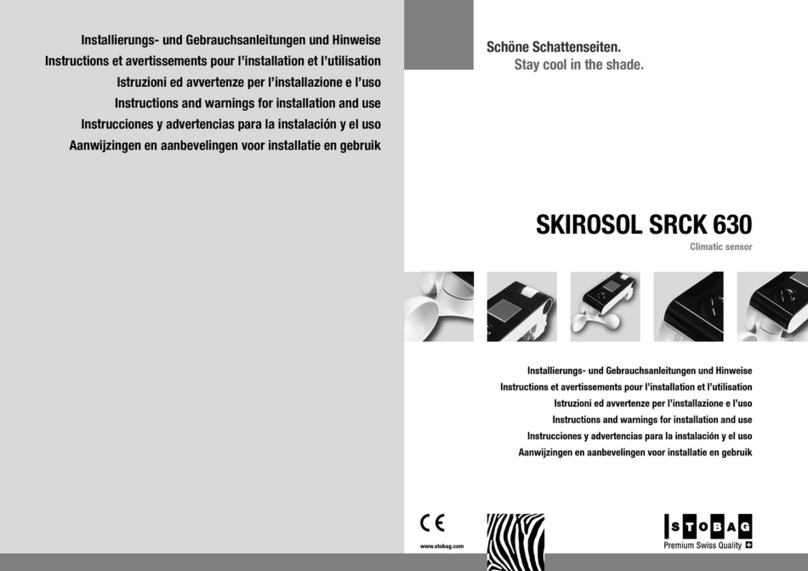
Stobag
Stobag SKIROSOL SRCK 630 Instructions and warnings for installation and use

DIEL
DIEL MT300 DIN Installation and instruction manual
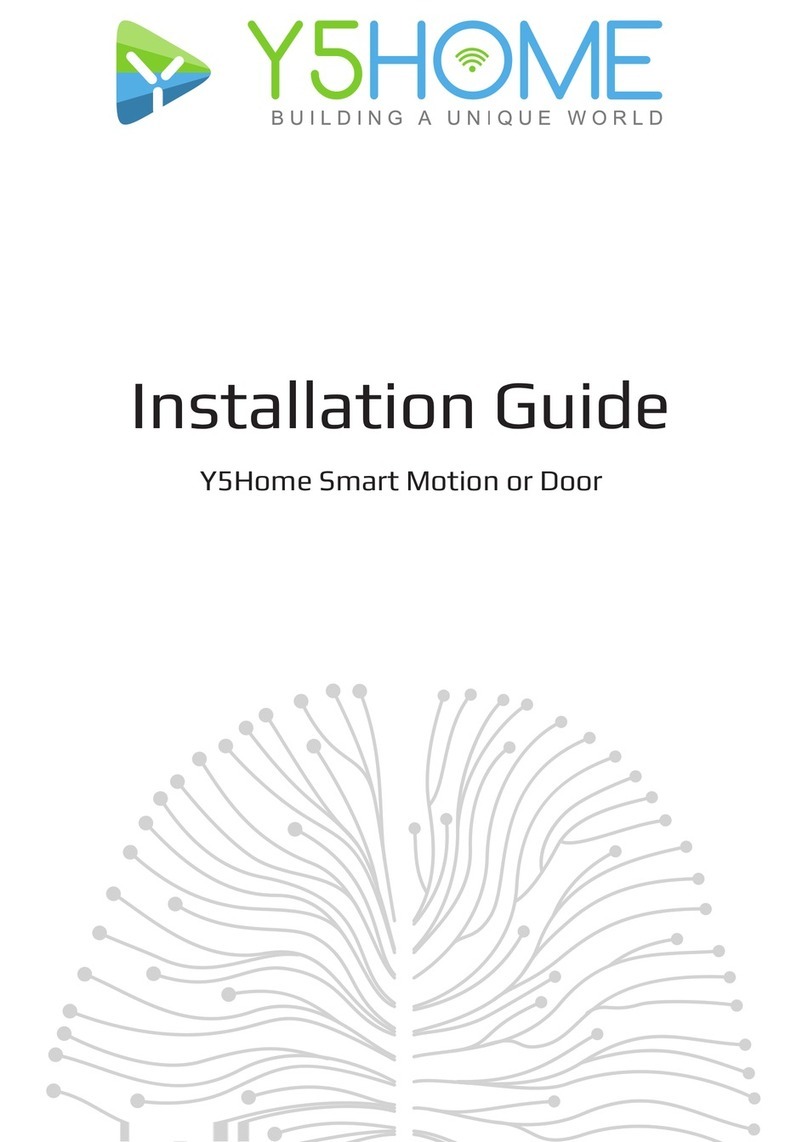
Y5Home
Y5Home Y5 Sensor installation guide
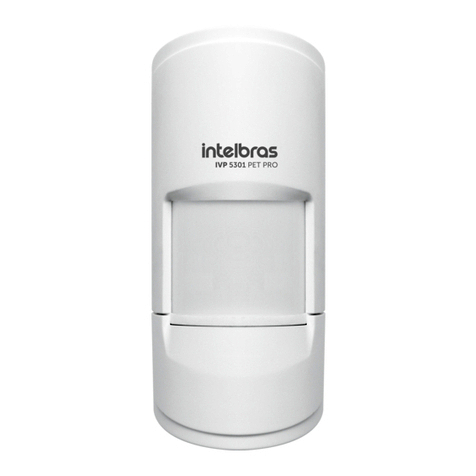
Intelbras
Intelbras IVP 5301 PET PRO user manual
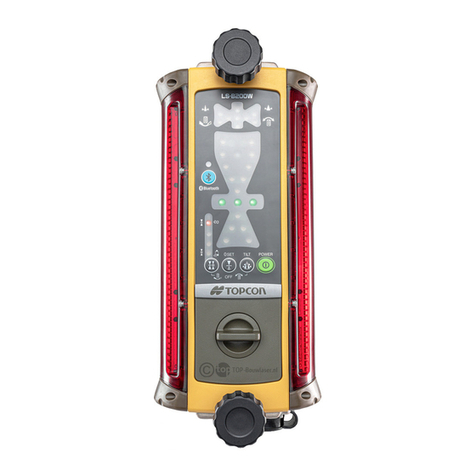
Topcon
Topcon LS-B200W instruction manual
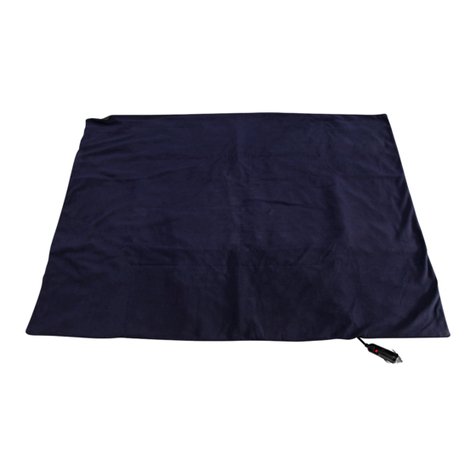
Hamron
Hamron 619-640 operating instructions
